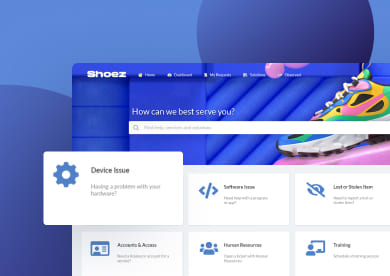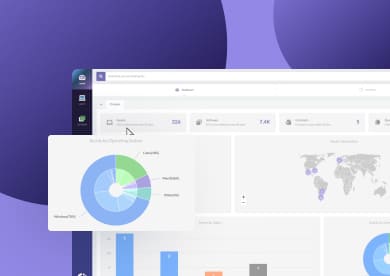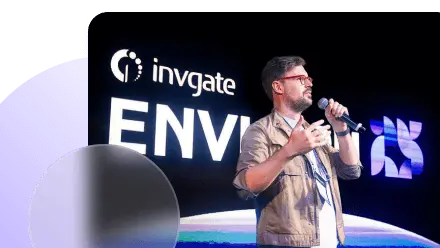Cloud Asset Management (CAM) is rapidly becoming a key practice for organizations. While that might not sound entirely new, it certainly makes sense.
According to Foundry’s 2025 Cloud Computing Survey, cloud migration continues to accelerate, and for good reason. In fact, 71% of IT leaders reported that cloud capabilities have driven sustainable revenue gains over the past 12 months.
In this blog post, we’ll define what Cloud Asset Management is, explore its main benefits, look at the role of software in the process, and outline how to build an effective CAM strategy in your organization.
What is Cloud Asset Management (CAM)?
Cloud Asset Management (CAM) is the practice of identifying, tracking, and optimizing all the resources an organization uses in the cloud. Its goal is to ensure those resources are used efficiently and effectively, delivering maximum value to the business.
What are cloud assets?
Cloud assets are all the components, services, and tools an organization uses within cloud environments to run operations, store data, and deliver digital services. They can include anything from infrastructure and applications to configurations and licenses.
Here are the main types of cloud assets:
- Infrastructure-as-a-Service (IaaS) – Virtual machines, storage, databases, and networking components.
- Platform-as-a-Service (PaaS) – Development tools, APIs, middleware, containers, and managed databases.
- Software-as-a-Service (SaaS) – Cloud-based applications like Microsoft 365, Salesforce, or Slack.
- Licenses and subscriptions – Usage rights and contracts associated with cloud services.
- Configurations and access controls – Identity roles, API keys, and permission settings.
- Data and workloads – Any information or processes stored and executed in the cloud.
Why do organizations need Cloud Asset Management?
As organizations move more workloads and applications to the cloud, maintaining visibility and control becomes increasingly complex. Multiple providers, hybrid setups, and pay-as-you-go models often lead to hidden costs, security gaps, and resource inefficiencies.
Cloud Asset Management helps tackle these challenges by giving teams a clear picture of what’s running in the cloud, who’s using it, and how much it costs. With this visibility, organizations can optimize resource usage, reduce waste, strengthen compliance, and make smarter investment decisions
5 benefits of Cloud Asset Management
While Cloud Asset Management covers all resources in the cloud, Cloud IT Asset Management (Cloud ITAM) focuses specifically on IT-related assets such as software, virtual machines, and SaaS applications.
This practice ensures that every IT asset in the cloud (whether it’s a license, instance, or service) is properly tracked, compliant, and delivering value. It helps organizations:
- Avoid overspending on unused or duplicate subscriptions.
- Ensure compliance with software licensing agreements.
- Standardize configurations and governance across multiple environments.
- Support audits and security efforts with accurate IT asset data.
- Enable lifecycle tracking to plan renewals, upgrades, and decommissions.
In other words, Cloud ITAM gives organizations the same level of discipline and visibility they have on-premises, but adapted to the fast-paced, dynamic nature of the cloud.
Cloud ITAM vs. on-premise ITAM
On-premise IT Asset Management focuses on physical and locally hosted resources owned and maintained by the organization, such as servers, desktops, and installed software.
Cloud IT Asset Management, on the other hand, extends those same principles to cloud environments, where assets are virtual, subscription-based, and often short-lived. It deals with SaaS applications, cloud licenses, and virtual infrastructure that the organization uses but doesn’t own.
Here’s how they compare:
| Aspect | On-premise ITAM | Cloud ITAM |
| Asset location | Hosted in the organization’s own infrastructure (data centers, servers, or user devices) | Hosted in external cloud environments (AWS, Azure, Google Cloud, SaaS platforms) |
| Asset type | Physical hardware and locally installed software | Virtual machines, SaaS apps, PaaS/IaaS services, and cloud subscriptions |
| Examples | Desktops, servers, routers, Microsoft Office installed locally, Oracle Database, Adobe CS6 | Slack licenses, Microsoft 365, Salesforce, AWS EC2 instances, Azure storage, Google Workspace |
| Ownership | Owned and maintained by the organization | Subscribed or rented from cloud providers |
| Visibility | Static and centralized | Dynamic and distributed across multiple cloud providers |
| Cost model |
Upfront purchase and depreciation | Pay-as-you-go or recurring subscription |
| Lifecycle | Predictable and long-term | Elastic and scalable, often short-lived |
| Management tools |
Discovery agents, network inventory, or on-premise ITAM platforms | Cloud-native monitoring, SaaS management, or Cloud ITAM tools |
In short, on-premise ITAM manages what you own, while Cloud ITAM manages what you use in the cloud.
Most cloud assets are subscribed or rented from providers, meaning organizations control how they’re used but not the underlying infrastructure. However, in private or hybrid cloud models, companies can own and manage parts of their environment directly, combining the control of on-premise systems with the flexibility of cloud scalability.
How to get started with cloud-based Asset Management? The cloud ITAM process
There’s no single, one-size-fits-all process for Cloud Asset Management (CAM) because each organization’s cloud environment, structure, and goals are different.
However, most successful implementations follow the same core stages — adapted to the organization’s size, level of cloud maturity, and whether they use a public, private, or hybrid cloud setup.
Here’s what that typically looks like:
- Assess your current cloud environment - Start by identifying all the cloud services, applications, and infrastructure your organization is using. This includes everything from IaaS and PaaS resources to SaaS subscriptions. At this stage, the goal is visibility — knowing what exists, where, and who owns it.
- Define ownership and governance - Establish who is responsible for each asset category (IT, finance, security, procurement) and define policies for how cloud resources are purchased, managed, and retired. This ensures accountability and avoids shadow IT.
- Centralize data in a single inventory - Use a Cloud Asset Management platform to consolidate all your asset information in one place. This helps unify data from multiple providers (like AWS, Azure, Google Cloud, and SaaS tools) and provides a single source of truth for cost, usage, and compliance.
- Automate tracking and optimization - Automate discovery, usage monitoring, and cost allocation whenever possible. This allows your team to identify unused or underutilized resources, optimize spending, and reduce security risks tied to orphaned assets.
- Set up reporting and continuous improvement - Implement dashboards and reports that show asset usage, cost trends, and compliance metrics. Use these insights to guide ongoing optimization, negotiate better contracts, and align cloud spending with business outcomes.
Is the CAM process the same as a cloud ITAM process?
The CAM process is not exactly as the cloud ITAM process. They share many steps and goals, but the scope and focus differ.
- CAM looks at everything that exists in the cloud: infrastructure, data, configurations, and IT assets. Its goal is to maintain overall visibility, efficiency, and governance across the cloud ecosystem.
- Cloud ITAM focuses specifically on IT-related assets within that ecosystem — like SaaS apps, licenses, and virtual machines — emphasizing compliance, cost control, and lifecycle tracking.
In other words: You can think of Cloud ITAM as part of Cloud Asset Management, focused on IT-specific governance inside the larger CAM framework.
Using InvGate as your Cloud Asset Management software
InvGate Asset Management is an IT Asset Management solution designed to help organizations efficiently manage their IT assets, including those hosted in the cloud. It collects data from cloud-based resources (such as virtual machines, containers, and storage volumes) to provide full visibility and control across your cloud environments.
By centralizing this information, InvGate Asset Management enables you to track, monitor, and optimize your cloud assets just like your on-premise ones. This ensures accurate inventories, better cost control, and a clearer understanding of how your cloud infrastructure is being used.
Connect our solutions with the apps you use every day.
Explore InvGate's integrations

Through native integrations with major cloud providers like Amazon Web Services (AWS), Microsoft Azure, Google Cloud Platform, and Microsoft 365, InvGate Asset Management automatically discovers and syncs data from your cloud environments. This allows you to visualize instances, monitor usage, and track associated costs — all from a single, unified platform.
If you’re ready to take full control of your cloud ecosystem, explore how InvGate Asset Management can help you monitor, manage, and optimize your cloud assets efficiently. Start your free trial or talk to our sales team to see it in action.
5 Cloud IT Asset Management best practices
To wrap up, here are a few simple best practices to make your Cloud IT Asset Management efforts more effective:
- Establish clear ownership – Define who is responsible for managing and approving cloud assets to prevent shadow IT and duplication.
- Automate discovery and monitoring – Use dedicated ITAM or CAM tools to automatically detect, track, and update your asset inventory in real time.
- Regularly review costs and usage – Schedule periodic audits to identify underused resources or unnecessary subscriptions and eliminate waste.
- Standardize governance and access – Apply consistent policies for provisioning, tagging, and permissions to maintain control and compliance.
- Integrate with other IT systems – Connect your asset management platform with ITSM, finance, and security tools to align insights and automate workflows.
By following these best practices, organizations can keep their cloud environments efficient, compliant, and cost-optimized while maintaining full visibility over every IT asset.















